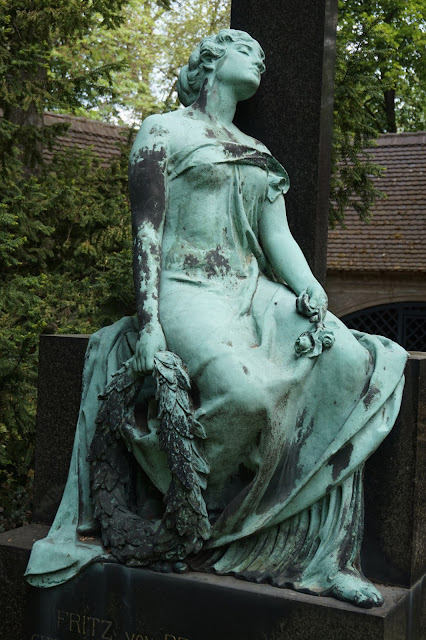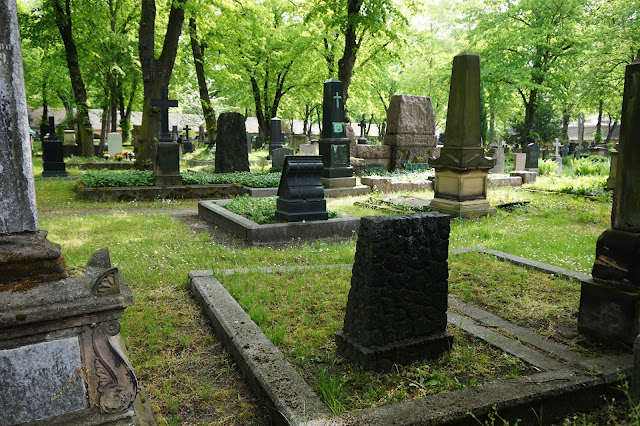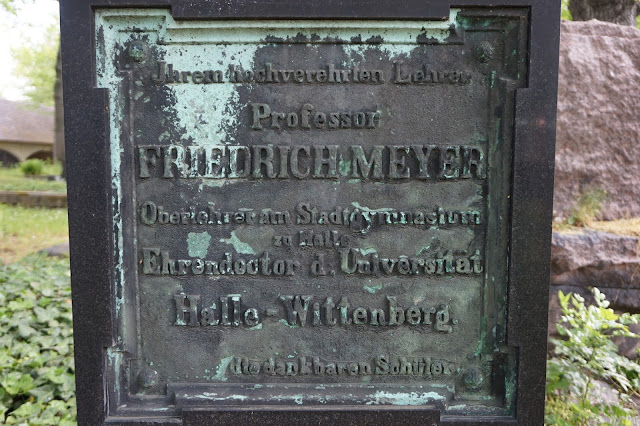On my first full day in Halle, prior to visiting the market place ("maktplatz") and church ("kirche"), my wonderful host, Dr. Manfred Stern, took me to see graves of mathematicians in the Stadtgottesacker. It you take apart that word you see "stadt" for city, "gottes" for God's and "acker" for "acre." So it is "God's acre of the town;" I think that's a great name for a cemetery!
I believe this is the only Renaissance-style cemetery in Europe north of the alps. It was designed in the same fashion as the Campo Santo in Pisa, Italy and has been here since 1557.
The tombstone below, which is also visible in the center of the photograph above, is that of little-known mathematician Friedrich Meyer. He was not a university professor but rather a teacher at the Stadtgymnasium. However, he was on close terms with Halle University and professors Eduard Heine and Georg Cantor there. He was awarded an honorary doctorate from Halle University in 1894.
Manfred, who had discovered this tombstone years ago while looking for the tombstone of famed mathematician Eduard Heine, showed me this particularly stone because this mathematician and I share a surname and because the tombstone is mathematically interesting - inscribed with mathematical objects somewhat reminiscent of what was said to be on the tombstone of Archimedes.
We also looked for Heine's grave, which Manfred had taken a picture of in about 1980. It was in good shape then, but it looks like in the past 36 years it has either deteriorated or been removed. It should be in the area of what is shown in the photograph below. If there's one thing I've learned on these travels it is that our memorials are not permanent!
We did see the tomb of mathematician Johann Andreas Segner (1704-1777). From 1735-1755 he taught physics, mathematics and chemistry at the University of Gottingen. He also founded the observatory there. Then from 1755 until his death he taught physics, mathematics and astronomy at the University of Halle. He invented a precursor of the turbine, which was known as the Segner wheel, and he was visited in Halle by Leonhard Euler (1707-1783), who used Segner's results in his own mechanical investigations.*
*Information on Segner taken from the Mathematical Intelligencer (vol. 15, no. 2, 1993) article The Stadtgottesacker in Halle by Dr. Manfred Stern.





















No comments:
Post a Comment